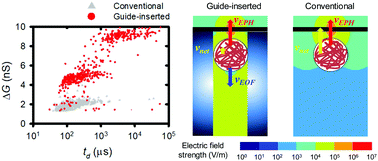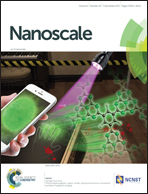Enhancing the sensitivity of DNA detection by structurally modified solid-state nanopore
Abstract
Solid-state nanopore is an ionic current-based biosensing platform, which would be a top candidate for next-generation DNA sequencing and a high-throughput drug-screening tool at single-molecular-scale resolution. There have been several approaches to enhance the sensitivity and reliability of biomolecule detection using the nanopores particularly in two aspects: signal-to-noise ratio (SNR) and translocation dwell time. In this study, an additional nano-well of 100–150 nm diameter and the aspect ratio of ∼5 called ‘guide structure’ was inserted in conventional silicon-substrate nanopore device to increase both SNR and dwell time. First, the magnitude of signals (conductance drop (ΔG)) increased 2.5 times under applied voltage of 300 mV through the guide-inserted nanopore compared to the conventional SiN/Si nanopore in the same condition. Finite element simulation was conducted to figure out the origin of ΔG modification, which showed that the guide structure produced high ΔG due to the compartmental limitation of ion transports through the guide to the sensing nanopore. Second, the translocation velocity decreased in the guide-inserted structure to a maximum of 20% of the velocity in the conventional device at 300 mV. Electroosmotic drag formed inside the guide structure, when directly applied to the remaining segment of translocating DNA molecules in cis chamber, affected the DNA translocation velocity. This study is the first experimental report on the effect of the geometrical confinement to a remnant DNA on both SNR and dwell time of nanopore translocations.



 Please wait while we load your content...
Please wait while we load your content...